UAV External Airflow CFD Simulation, ANSYS Fluent Tutorial
Free
- The problem numerically simulates the airflow around a drone (UAV External Airflow) using ANSYS Fluent software.
- We design the 3-D model by the CATIA software.
- We mesh the model with Gambit software, and the element number equals 3079338.
To Order Your Project or benefit from a CFD consultation, contact our experts via email ([email protected]), online support tab, or WhatsApp at +44 7443 197273.
There are some Free Products to check our service quality.
If you want the training video in another language instead of English, ask it via [email protected] after you buy the product.
Description
Description
In this project, the airflow around a drone is simulated (UAV External Airflow) by ANSYS Fluent software.
UAVs can be considered small drones. One of the essential advantages of drones is their remote control capability, which has made them particularly popular in the aviation and military industries. The design of UAVs requires special care and consideration.
Since drone flight is done through remote control commands, there has been much effort to pay special attention to the structural design of these aircraft in terms of aerodynamics. Simulating the airflow around a UAV is crucial to studying aerodynamic forces, stability, and, ultimately, good designs.
Using simulation software such as ANSYS Fluent can significantly reduce the costs of designing, constructing, and testing these complicated structures.
UAV Methodology
Due to the high speed of airflow during flight and the possibility of very high separation in such flows, the standard k-epsilon model using standard wall functions is exploited to analyze the airflow turbulence and better investigate the separation of the flow from the surface.
Considering the high sensitivity in the design of the drone’s body, the initial geometry required for this analysis was generated in CATIA, completed in spaceclaim, and meshed inside Ansys Meshing. The mesh type used for this geometry is unstructured, and the element number is 3,079,338.
UAV Conclusion
At the end of the solution, we obtain contours of pressure, velocity, streamlines, and velocity vectors. The maximum pressure and velocity occur in the front and at the top of the UAV, respectively.
The maximum velocity is about 43 m/s, while the airflow speed is 30 m/s, which shows the velocity increase due to the UAV structure. Also, vortexes, flow separation, and lots of practical results are extracted and analyzed in this product.
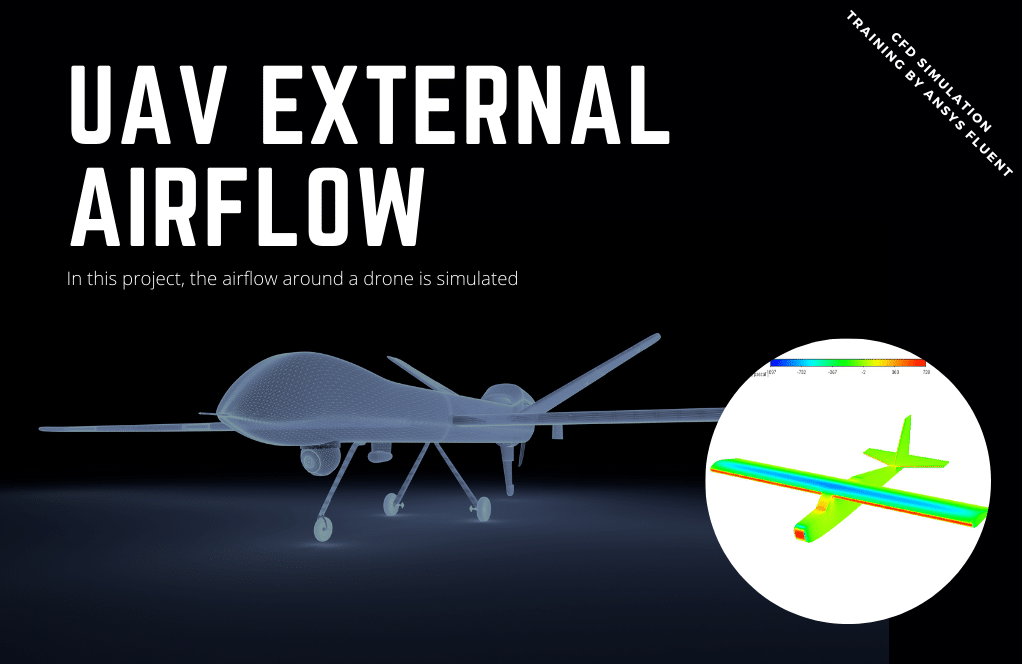
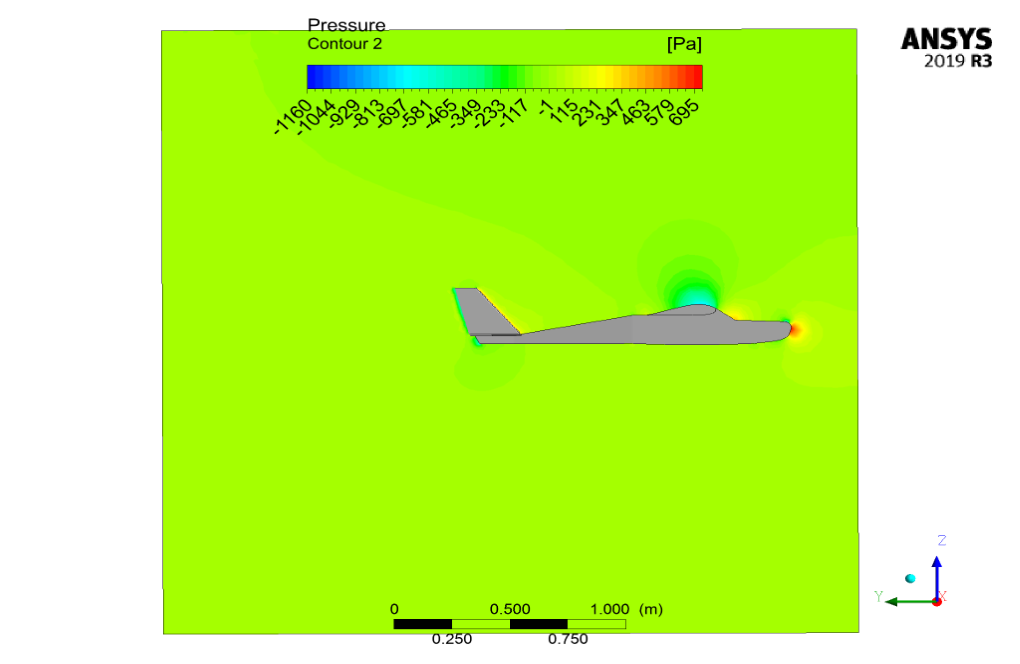
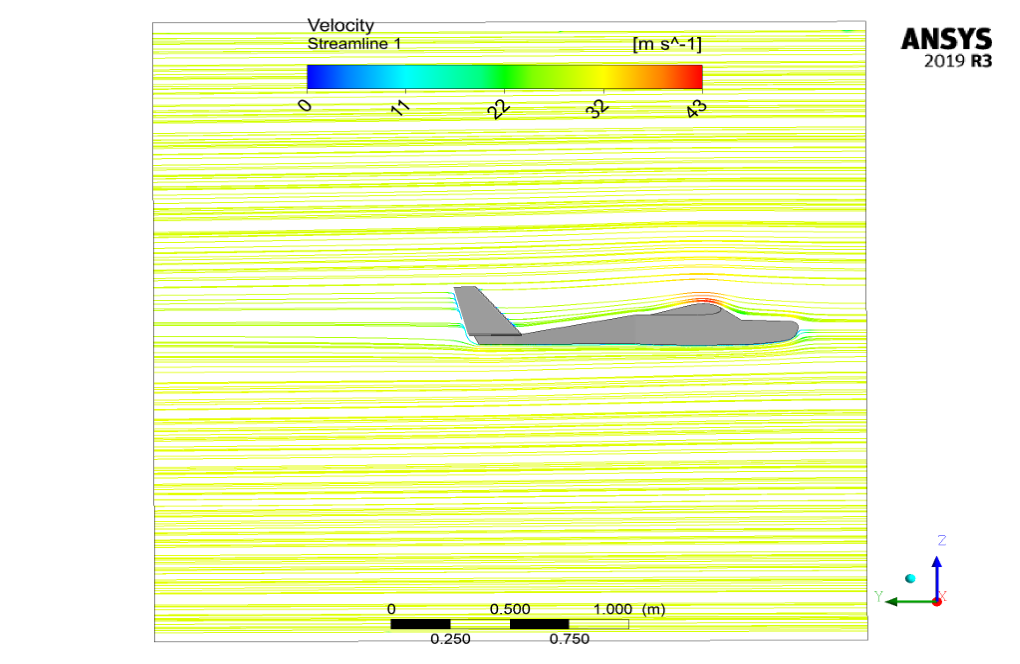
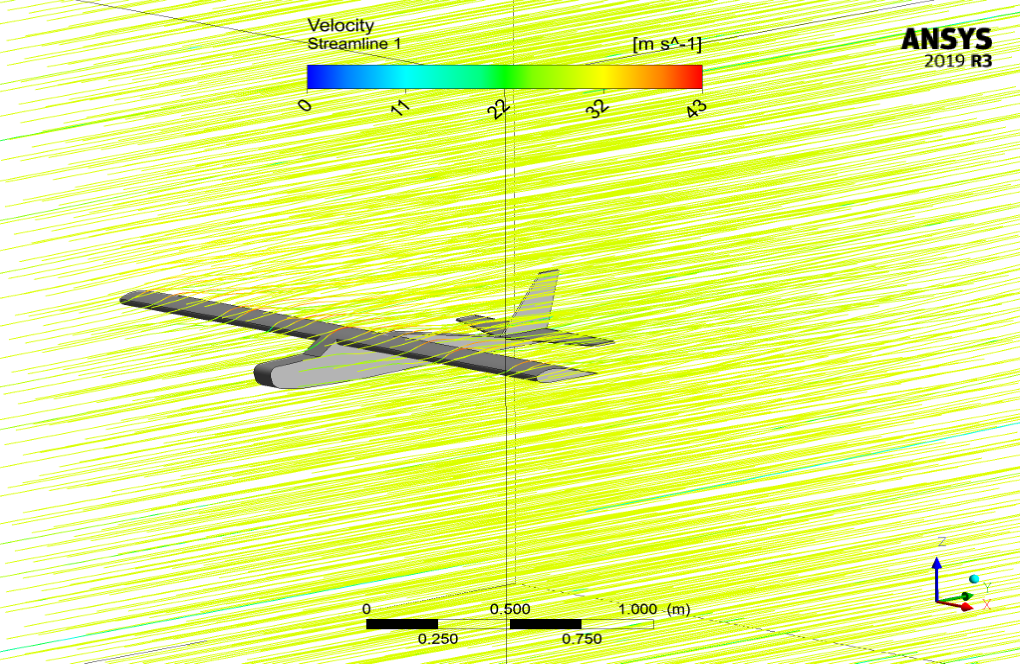
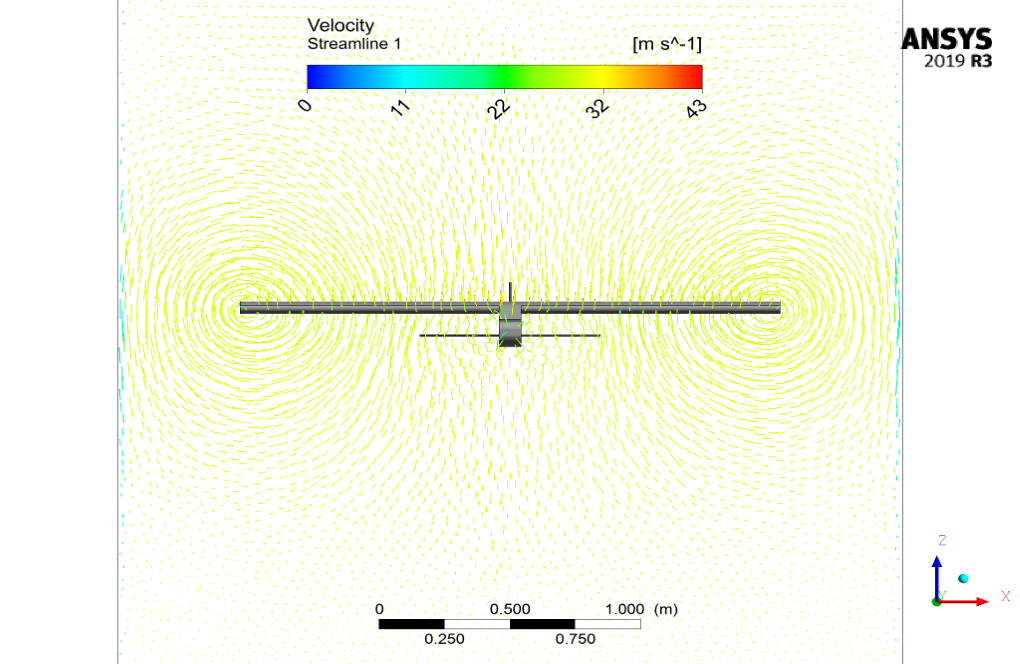
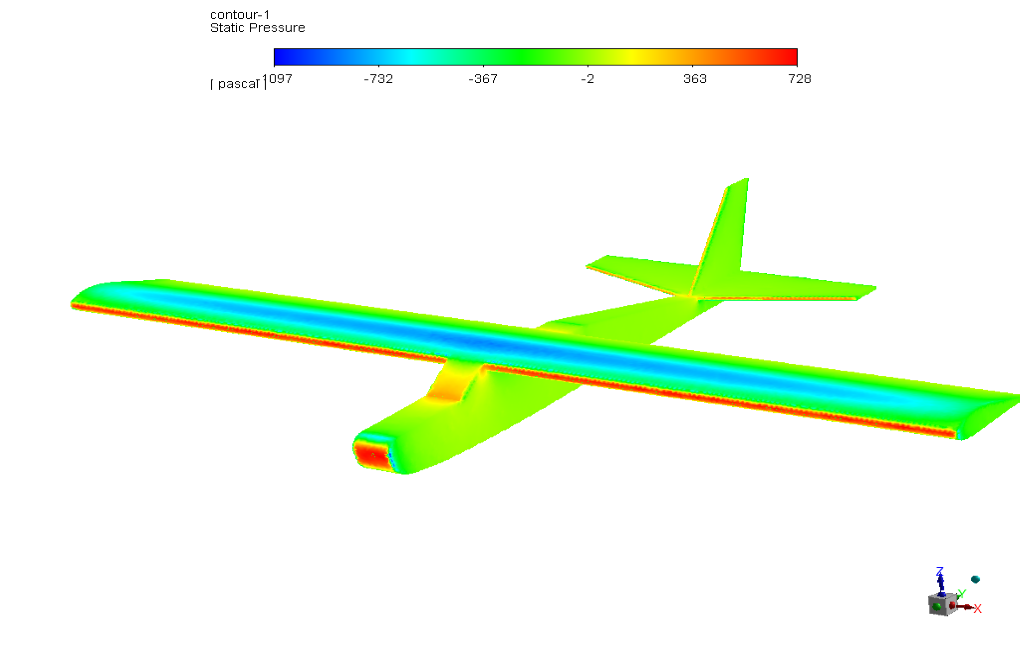
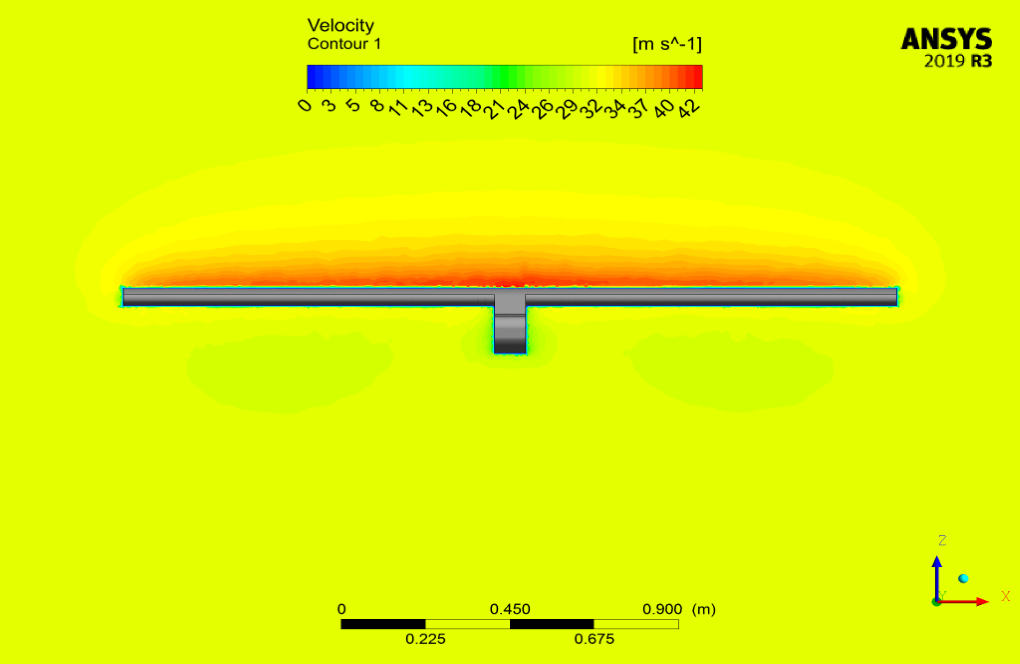


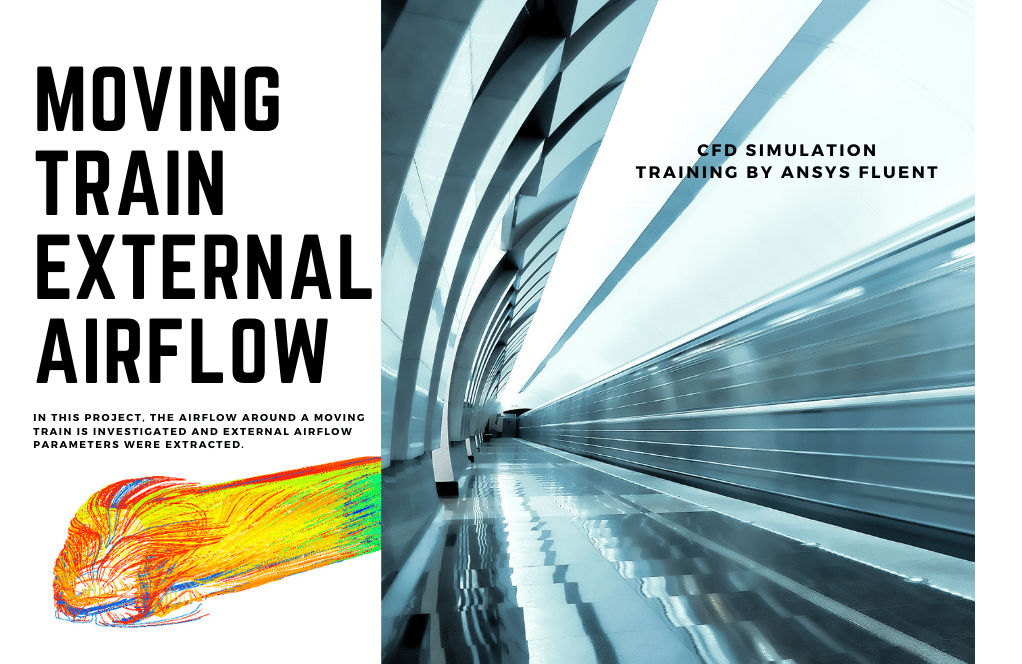
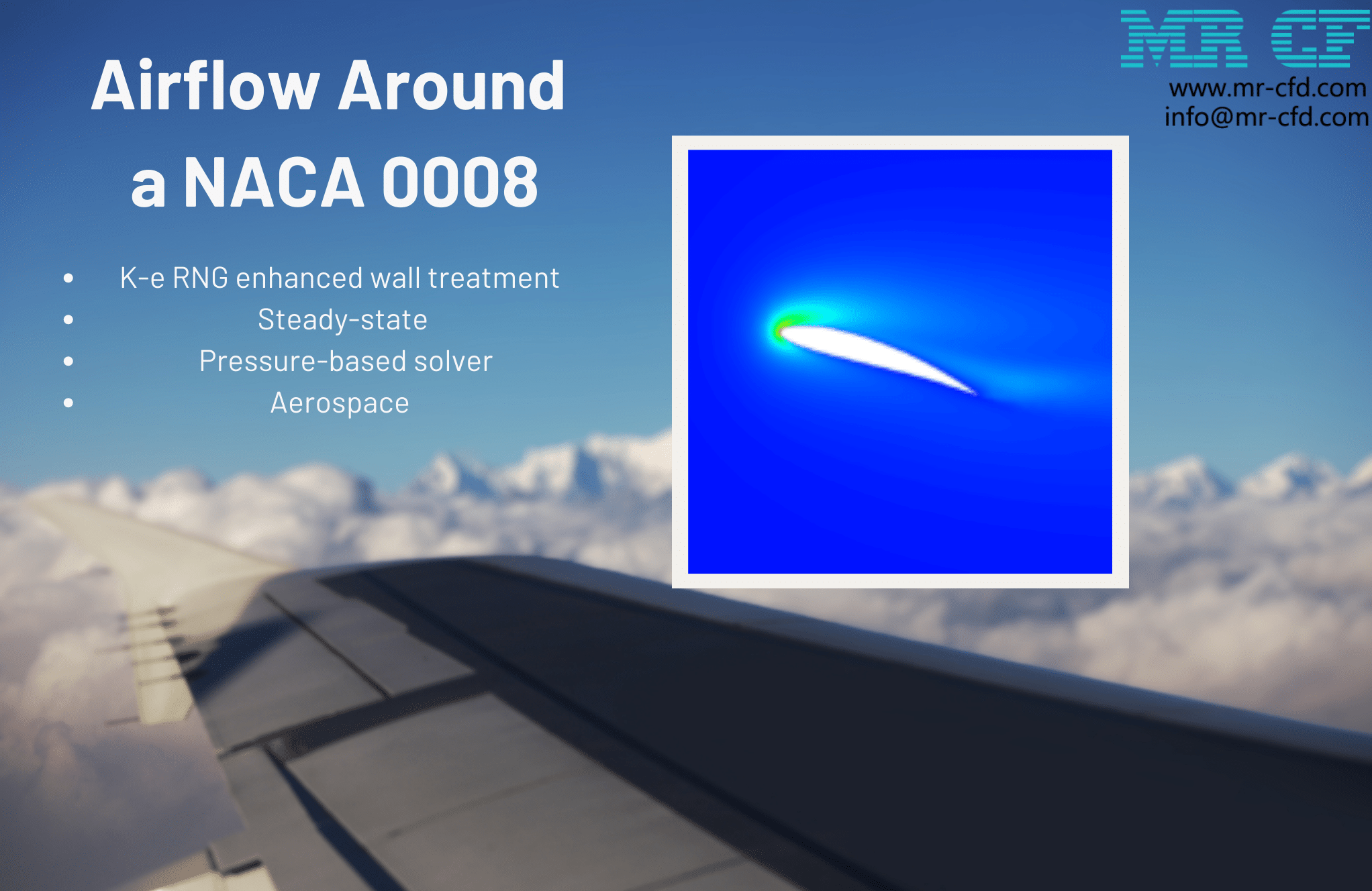
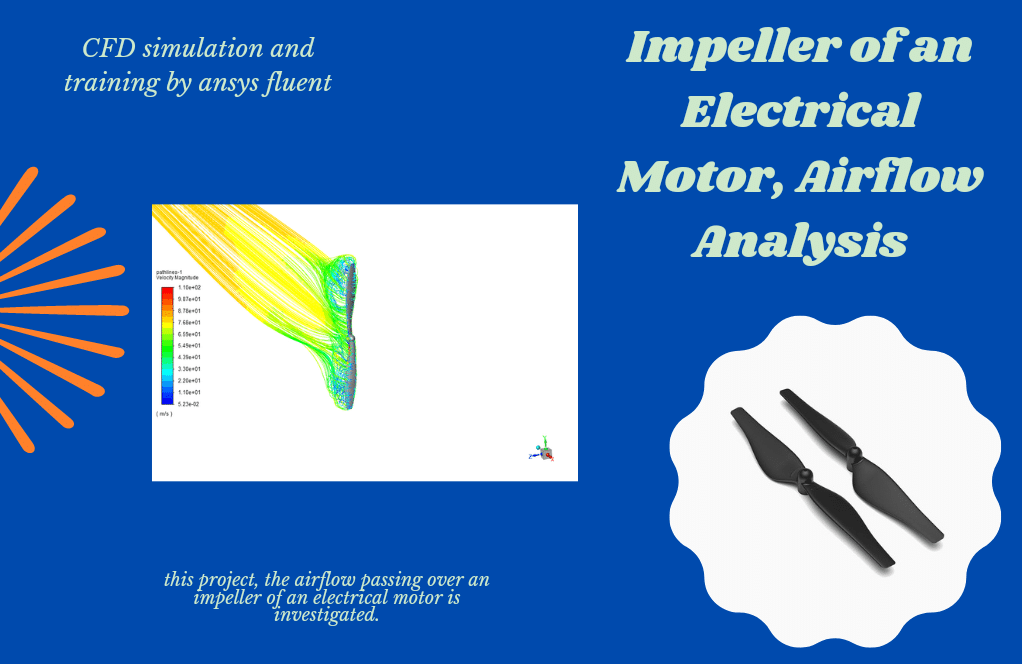
Dr. Alaina Huel Sr. –
How do you ensure the accuracy of this simulation?
MR CFD Support –
The simulation is based on established physical principles and mathematical models. We also validate our results against experimental data to ensure their accuracy.
Dovie Gerhold PhD –
How does the simulation model the airflow over the UAV?
MR CFD Support –
The simulation uses the k-omega SST turbulence model to accurately simulate the complex airflow patterns over the UAV.
Dr. Winifred Runte –
The ability to customize this simulation for different types of UAVs is a significant advantage!
Savion Lowe –
The innovative use of CFD in this simulation is commendable!
Jacynthe Rippin I –
Can this simulation be modified to model different types of UAVs?
MR CFD Support –
Yes, we can customize the simulation to your specific needs. Please provide more information about your particular requirements.
Stephania Langosh DDS –
Just wanted to say thanks for creating such an insightful tutorial on UAV external airflow simulation. As an aerospace engineering student, this has been incredibly helpful in understanding the practical aerodynamics involved with drone design and the detailed procedures on ANSYS Fluent.
MR CFD Support –
We’re delighted to hear that our UAV external airflow CFD simulation tutorial was helpful for your studies in aerospace engineering. It’s wonderful to know that our efforts in explaining the intricate aspects of drone aerodynamics in ANSYS Fluent have been beneficial. Thank you for your feedback, and continue enjoying our learning products!
Dr. Lizeth Harber –
The tutorial was incredibly useful for understanding UAV aerodynamics. I noticed how detailed the airflow analysis around the drone was, with a focus on aerodynamics, pressure and velocity contours, which is vital for UAV design.
MR CFD Support –
Thank you for your positive feedback! We are thrilled to hear that you found the tutorial useful and that the detailed analysis provided valuable insights into UAV aerodynamics and design. Your satisfaction is our top priority, and we’re pleased to see that our products are making a difference.
Earnestine Runte –
The detailed aerodynamics insights provided for UAV design from this simulation are extremely impressive. Enjoyed exploring every aspect of the tutorial.
MR CFD Support –
Thank you for your positive feedback! We’re thrilled to hear that you found our UAV external airflow simulation tutorial using ANSYS Fluent insightful and that it provided value in understanding UAV design aerodynamics. We appreciate you taking the time to review our product.
Mariana Collins PhD –
The tutorial helped me a lot in understanding the aerodynamics around the drone. Just wanted to say thank you!
MR CFD Support –
We are truly delighted to hear that the UAV External Airflow CFD Simulation tutorial has been beneficial for your understanding of drone aerodynamics. Thank you for choosing our product and for taking the time to share your positive experience with us!
Catharine Stehr IV –
I am amazed at how detailed the simulation for the UAV airflow is. It’s incredible how much work went into designing the drone from airflow perspective to ensure aerodynamic stability and performance!
MR CFD Support –
Thank you for your kind words! We’re thrilled to hear that you appreciate the level of detail and effort put into the UAV external airflow CFD simulation. Our goal is to provide comprehensive tools and simulations that help designers and engineers understand and optimize the aerodynamics of UAVs. If you have any more feedback or need further assistance, feel free to reach out!
Eileen Murphy –
The tutorial was extremely detailed and provided a comprehensive understanding of airflow simulation for a UAV. The visualization and analysis of the results clearly exhibited the impact of drone structure on speed and pressure distribution. Excellent material for anyone studying UAV aerodynamics.
MR CFD Support –
Thank you for your positive feedback! We’re glad to hear that the tutorial met your expectations and provided valuable insights into UAV aerodynamics. It’s great to know our detailed explanations and analyses were helpful. If you have any more questions or need further assistance, feel free to reach out.
Claudie Stoltenberg –
I’m impressed by how detailed the UAV CFD simulation seems to be, particularly interested in the use of high-quality unstructured meshes which are perfect for complex geometries like drones.
MR CFD Support –
Thank you for your positive feedback! We take great pride in providing detailed simulations with high-quality meshes to capture complex aerodynamic behaviors accurately. It’s wonderful to hear that you acknowledge the efforts put into ensuring our UAV simulation meets high standards.
Prof. Horacio Bernier IV –
I just completed the ‘UAV External Airflow CFD Simulation’ tutorial by ANSYS Fluent, and I must say it was excellent! The step-by-step guidance was clear, making it straightforward to follow throughout the simulation process, especially the turbulence modeling and meshing in Gambit.
MR CFD Support –
Thank you for your kind words! We are delighted to hear that you found our ‘UAV External Airflow CFD Simulation’ tutorial clear and easy to follow. Your positive feedback is greatly appreciated, and it motivates us to continue delivering high-quality learning products. If you have any more feedback or need further assistance, please let us know!
Daniella Bergnaum –
I really appreciated the detailed explanation of the UAV airflow simulation process using ANSYS Fluent. The step-by-step methodology highlighted important factors such as flow separation which would be integral to the UAV’s aerodynamic design. It’s insightful to see how simulations can cut down costs and lead to effective designs. Great work on providing such real-world applicable CFD analysis!
MR CFD Support –
Thank you for your positive feedback on our UAV External Airflow CFD Simulation tutorial! We’re thrilled to hear about your satisfaction with the level of detail and real-world applicability of our analysis. It’s truly rewarding to see our clients benefit from the capabilities of ANSYS Fluent for their aerodynamic design needs. If you have any more questions or need further assistance, please feel free to reach out. We’re here to help!
Tom O’Keefe –
I finished the tutorial and noticed how vortexes and flow separation are nicely visualized. It’s fantastic for understanding UAV aerodynamics!
MR CFD Support –
Thank you for your positive feedback! We’re thrilled to hear that our UAV External Airflow CFD Simulation tutorial has been helpful in enhancing your understanding of UAV aerodynamics. Your satisfaction is our top priority, and we’re glad that our product met your expectations.
Elvis Kozey –
I’m thrilled with how detailed the simulation results are with the UAV external airflow project. Seeing the pressure and velocity distributions has really helped me understand the aerodynamic considerations for drone flight.
MR CFD Support –
We are delighted to hear that our UAV External Airflow CFD simulation has met your expectations and has been instrumental in advancing your understanding of aerodynamics in drone flight. Your satisfaction is our top priority, and we take pride in the quality and detail of our simulations. Thank you for choosing our product, and we hope it continues to be a valuable resource for you!
Hettie Raynor I –
I’m really impressed with how comprehensive the UAV CFD simulation package is! The detailed analysis and ease of use helped me better understand the aerodynamics affecting drone flight.
MR CFD Support –
Thank you for your positive feedback! We’re delighted to hear that the UAV CFD simulation package has enhanced your understanding of aerodynamics in drone flight. If you ever have any more questions or need further assistance, don’t hesitate to reach out. We’re here to help!